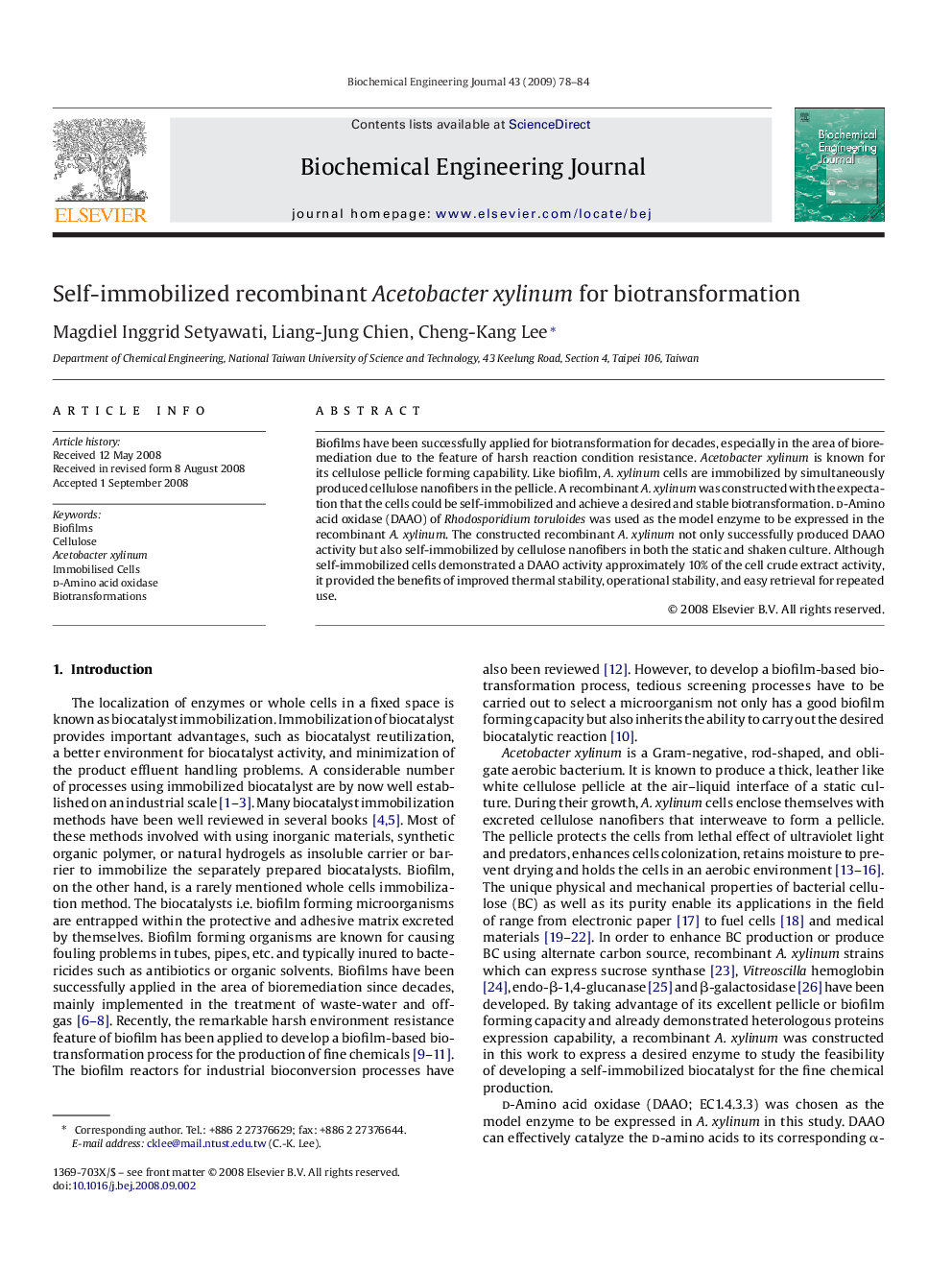| Article ID | Journal | Published Year | Pages | File Type |
|---|---|---|---|---|
| 4318 | Biochemical Engineering Journal | 2009 | 7 Pages |
Biofilms have been successfully applied for biotransformation for decades, especially in the area of bioremediation due to the feature of harsh reaction condition resistance. Acetobacter xylinum is known for its cellulose pellicle forming capability. Like biofilm, A. xylinum cells are immobilized by simultaneously produced cellulose nanofibers in the pellicle. A recombinant A. xylinum was constructed with the expectation that the cells could be self-immobilized and achieve a desired and stable biotransformation. d-Amino acid oxidase (DAAO) of Rhodosporidium toruloides was used as the model enzyme to be expressed in the recombinant A. xylinum. The constructed recombinant A. xylinum not only successfully produced DAAO activity but also self-immobilized by cellulose nanofibers in both the static and shaken culture. Although self-immobilized cells demonstrated a DAAO activity approximately 10% of the cell crude extract activity, it provided the benefits of improved thermal stability, operational stability, and easy retrieval for repeated use.
